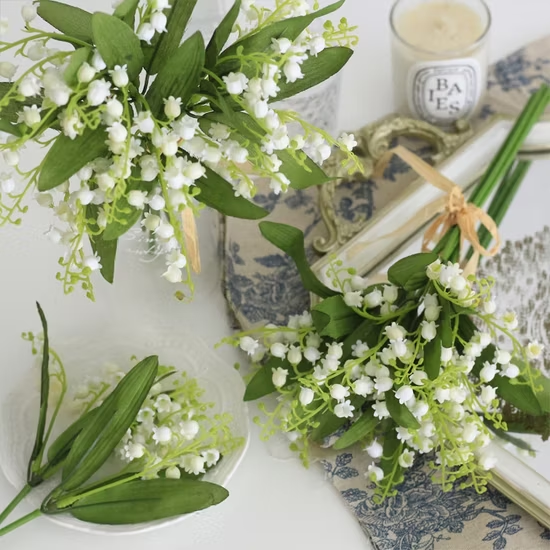Delicate white bells of lily of the valley bring a gentle beauty and subtle fragrance that can transform the mood of a space.
There’s something about waking up to the faint perfume of fresh flowers that makes a house feel like a sanctuary. A fresh floral scent wafting through your home instantly soothes the senses – especially when it doubles as décor. Take the lily of the valley, for example. Its tiny bell-shaped blooms might be unassuming, but their presence can fill a room with a quiet calm. Why are we so drawn to this little flower, even before we know its name or story? In an age of “less is more” interior design, symbolism in home décor is making a comeback. People are decorating not just for looks, but for meaning. And beyond its delicate beauty, the lily of the valley carries messages of renewal, purity, and emotional grounding that can enrich our living spaces on a deeper level.
What Does Lily of the Valley Symbolize? (Past and Present)
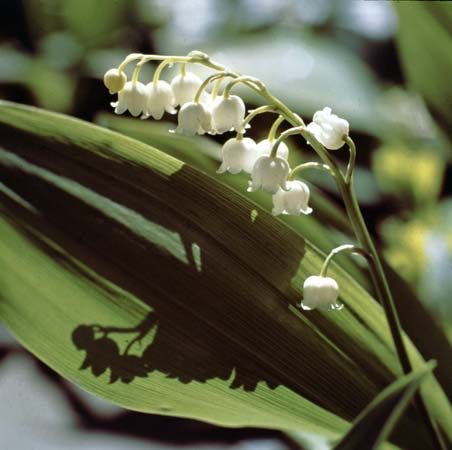
For centuries, lily of the valley has spoken a language all its own. Traditionally, this humble bloom symbolized purity, innocence, humility, and even the joy of renewal each spring. According to the Farmer’s Almanac, lily of the valley has many symbolic meanings – from serenity and youth to rebirth – and was even associated with tears and mourning in certain lore. One of its most famous meanings is “the return of happiness,” a definition from Victorian floriography that still holds today. No wonder Victorian brides often included lily of the valley in their bouquets for good luck and joy in marriage. Even in modern times, royalty have embraced this symbolism: Catherine Middleton (Princess of Wales) carried lilies of the valley in her 2011 wedding bouquet to signify purity, happiness, and good fortune in love.
The flower’s rich history is peppered with myth and devotion. In Christian folklore, lilies of the valley were said to spring from the tears of the Virgin Mary as she wept at the foot of the cross – hence old nicknames like “Our Lady’s tears”. (In another version, they arose from Eve’s tears upon leaving Eden.) Such legends only reinforced the bloom’s associations with sorrow turning into hope. In France, the lily of the valley is gifted on May 1st as a token of good luck and the promise of happiness returning after winter – a custom dating back to the 16th century. Across cultures and generations, this little flower stood as a quiet emblem of new beginnings.
Symbolism in the Modern Home
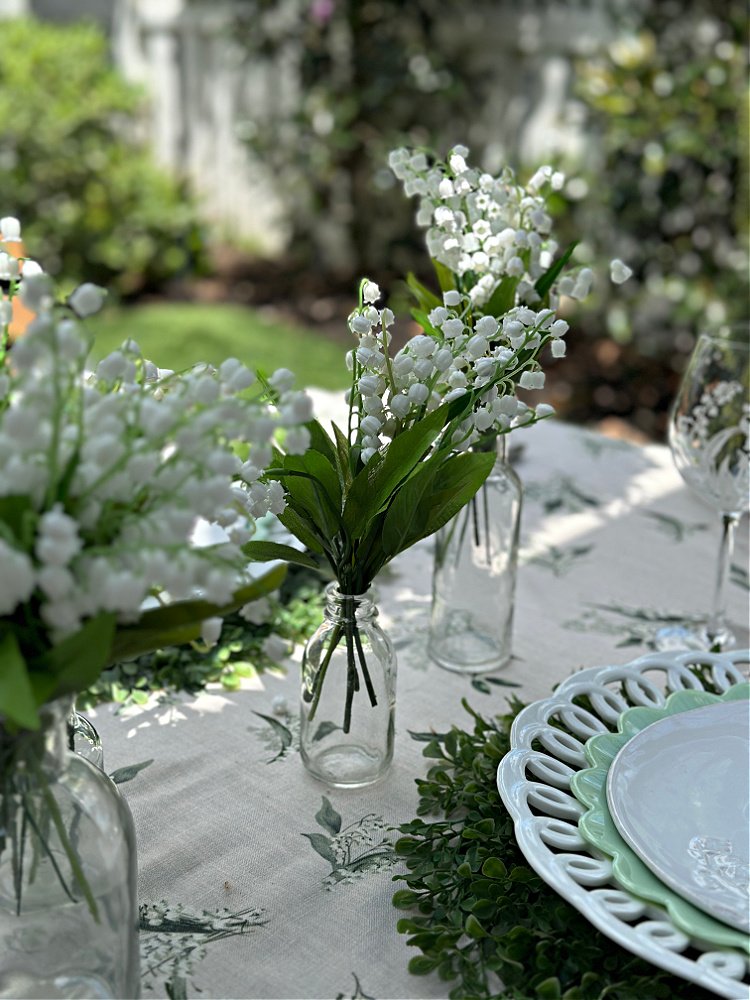
Today, the symbolism of lily of the valley has taken on fresh relevance. After the challenges of recent years, many of us crave objects in our homes that represent resilience and renewal. The lily’s ability to return perennially each spring has made it a modern icon of rebirth and emotional healing – a gentle strength after hardship. In fact, lily of the valley brings a serene touch, symbolizing the renewed hope that follows hardship. Its presence whispers that happiness and peace will always make a comeback, no matter how cold the winter. This message of hope and recovery resonates strongly in post-pandemic homes where people are seeking comfort and meaning.
If you’d like to explore how this small flower became such a powerful symbol of renewal and emotional beauty in design, you can read Why Lily of the Valley Captures the Soul of Every Beautiful Home, a deeper look into how this timeless bloom continues to inspire modern living spaces.
Psychologically, humans have always anchored emotions to symbols. We keep photographs to remind us of loved ones, souvenirs to recall adventures, and flowers to evoke feelings of calm. A flower like lily of the valley can act as a quiet emotional cue in a room – a subtle reminder of hope, humility, or the joy of a fresh start. Nature supports emotional well-being, and even a simple floral symbol can create a sense of belonging in our space. According to Psychology Today, exposure to natural elements has a measurable positive impact – from reducing stress and anxiety to improving mood. In one study, greater access to greenery was linked to lower levels of depression and anxiety in communities. In our homes, even a small touch of nature or a beloved symbol can ground us emotionally. The lily of the valley’s petite white blossoms and the nostalgia surrounding them become more than decor; they become a feeling we can return to whenever we glance their way.
The Flower’s Emotional Frequency: Why We’re Drawn to Its Energy
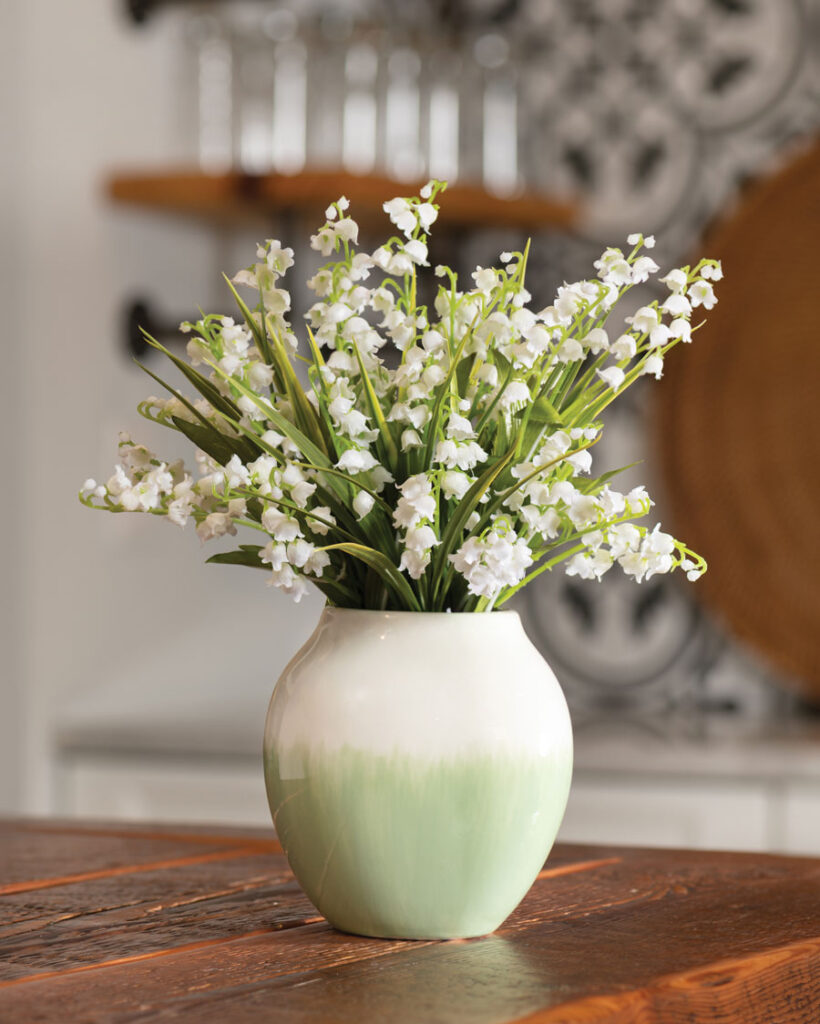
What is it about lily of the valley that makes it feel so comforting? Part of the answer lies in our senses and the vault of memories they guard. The power of scent in particular plays a remarkable role in how we experience space. The fragrance of lily of the valley is soft, fresh, slightly sweet, often described as “spring in a breath.” Our brains are wired such that smell and emotion are intertwined at a deep level: odors take a direct route to the brain’s limbic system (including the hippocampus and amygdala), the regions that govern memory and feeling.
In other words, a familiar floral scent can instantly awaken feelings and memories before we even know what’s happening. Think of how the smell of a particular flower might transport you back to your favorite garden, a sunlit morning on your grandmother’s porch, or a carefree childhood memory. The lily of the valley, blooming in late spring, its bell-shaped blooms whispering in the light, can bring to mind mornings in a dappled forest, or the translucent hush of early dawn. This is very much the so-called “Proustian effect”: a simple scent unlocking a flood of emotional recall.
Beyond its scent, there’s an almost magical “energy” that natural elements bring into a room. Modern interior design increasingly leans on the concept of biophilic design, which means integrating natural materials, plants, patterns and textures into our built environments in order to promote well-being. We are biologically attuned to nature’s rhythms; our innate love of the natural world is called biophilia. Science has begun to confirm what we’ve long sensed: bringing bits of nature indoors makes us calmer and more focused. For example, a study found that indoor spaces enhanced with nature-inspired elements led to lower anxiety and better stress-recovery metrics compared to plain environments.
In our home-design philosophy at Momiji, we embrace this idea wholeheartedly. A “low-stimulation comfort cue,” such as the faint floral silhouette of a lily of the valley motif, or its scent floating gently in the air, can transform a shelf, a corner, or a bedside table into a sanctuary of calm. In a world of constant screens and noise, a cluster of lily of the valley on a shelf becomes an invitation to pause and breathe. Nothing loud or overwhelming, just softness: gentle white blooms, subtle fragrance, a whisper of nature’s memory. That simplicity is exactly what our modern nerves crave. A space that carries this quiet symbol subtly tells our minds: “You are safe here. You can rest.”
How Lily of the Valley Fits Today’s Home Trends
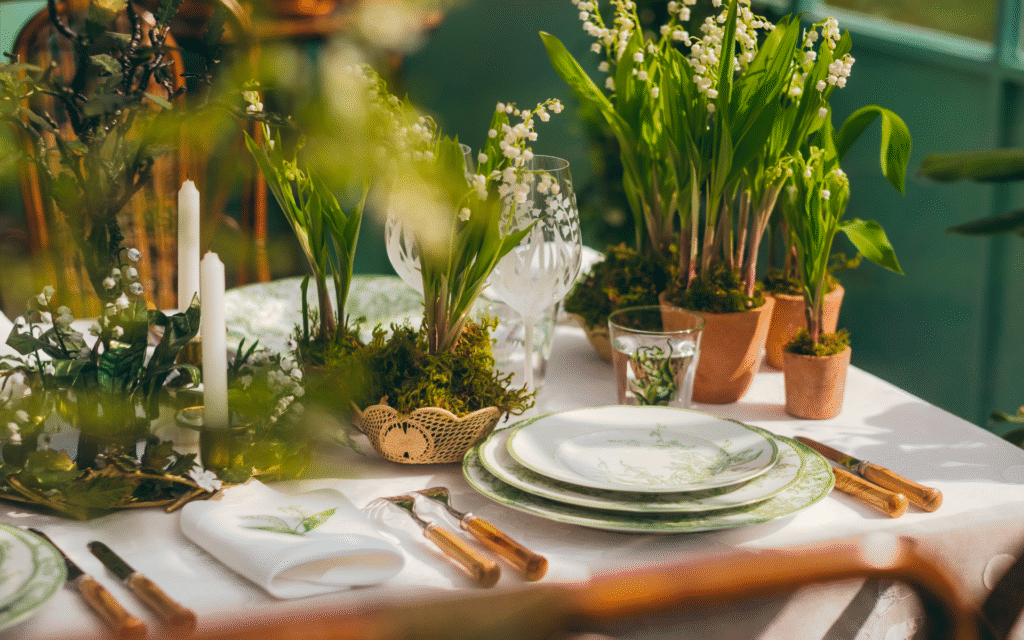
In terms of style, the tiny bloom of the lily of the valley fits perfectly with the prevailing moods of today’s interiors. One major movement is toward soft minimalism and slow living. After years of maximalist excess, many homeowners are now paring back and choosing simplicity, but not the cold, austere kind. Rather, the focus has shifted to warmth and meaning. Think creamy neutral tones, natural textures, and a handful of well-loved décor pieces instead of dozens of knick-knacks. This approach leaves room for sentimental or symbolic items to shine. As The Spruce puts it, “minimalism in 2025 is all about warmth and elevating what’s essential,” emphasizing simplicity, yes, but with soul.In such a room, a single vase of lily of the valley becomes a beautiful focal point, a quiet nod to nature that brings emotional life to a pared-down space.
Another key trend is biophilic and nature-inspired décor, which dovetails effortlessly with that slow, mindful aesthetic. Designers are increasingly bringing the outdoors in, using materials like wood, stone, bamboo, and yes, even rattan. According to a recent overview, choosing furniture and décor made from natural substances is a core part of this shift. The trend isn’t just about a look; it’s driven by our collective longing to reconnect with nature for comfort and sustainability. In practical terms, décor motifs such as flowers, leaves and natural fibers are no longer retro, they’re right on trend. For instance, a throw pillow or wallpaper pattern subtly inspired by lily of the valley feels timeless and timely.
Perhaps the most heartening development is the return of meaningful décor. More homeowners are moving away from catalogue-perfect rooms and filling their homes with items that tell stories. In 2025’s design ethos, your space should reflect your soul. A quilt inherited from grandmother, a travel memento, or a motif of a beloved flower can hold emotional weight. Interior experts note that we are seeing “narrative-rich spaces” where personal history and symbolism matter. The lily of the valley hits all these notes: nostalgic (timeless bloom with vintage charm), eco-friendly (natural, seasonal plant or sustainable motif), and deeply meaningful (symbolizing renewal and the return of happiness). In a “quiet luxury” or soft-minimalist living room of 2025, you might see a neutral palette, a botanical print, and furniture made from sustainable materials. A small sprig of lily of the valley in a ceramic bud vase would fit that quiet, luxurious simplicity beautifully, infusing a touch of life and a layer of story.
Finally, sustainability in design goes hand-in-hand with this meaningful approach. Fast décor is falling out of favor; instead, people are drawn toward timeless motifs and craftsmanship that lasts. Natural motifs like the lily of the valley carry a kind of sustainable symbolism—they aren’t just seasonal fads you’ll soon tire of. Items made from rattan, wood or stone (materials often associated with this flower’s aesthetic) age gracefully and serve as emotional anchors in the home.
Bringing the Symbolism Home: Practical Inspiration
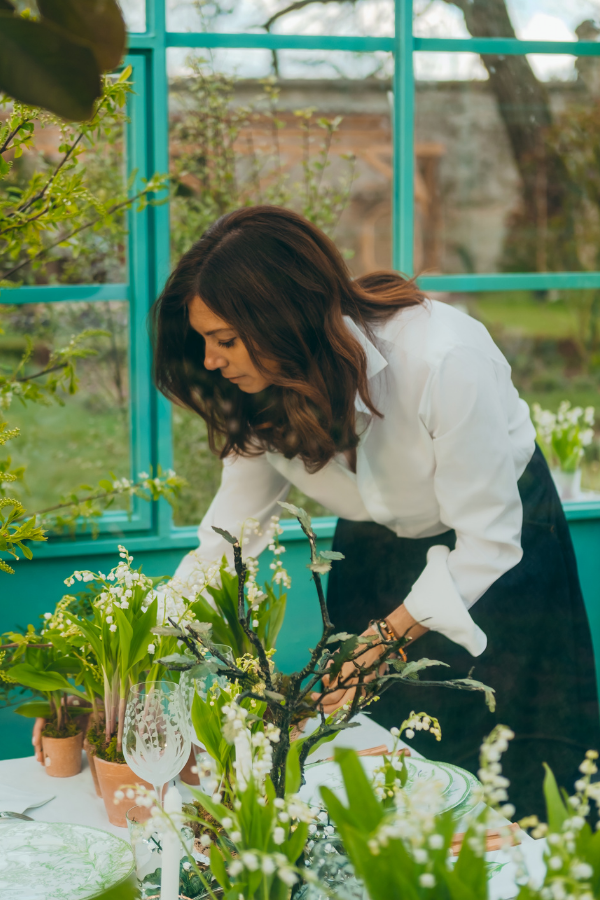
So how can you weave the gentle symbolism of lily of the valley into your own home? The good news is, you don’t need a garden patch or a green thumb to do it (though by all means plant the bulbs outside if you can!). Here are a few practical, creative ideas for infusing your space with this flower’s spirit:
Fresh or Dried Sprigs:
Sometimes the simplest gestures say the most. A small vase of lily of the valley on your windowsill or bedside brings a quiet charm to any corner. When in bloom, their soft fragrance and nodding white bells whisper renewal and sweetness. Out of season, dried or pressed sprigs framed in a shadow box can preserve that same calm beauty all year.
Art and Accents:
Lily of the valley translates beautifully into art and décor. A vintage botanical print, a minimalist line drawing, or even a small ceramic piece with its delicate motif can serve as a daily reminder of joy returning. These subtle symbols gently infuse your home with serenity without overwhelming it.
Textiles and Touches:
Patterns inspired by the flower, on throw pillows, bed linens, or wallpaper, create a sense of continuity and calm. Imagine a “renewal nook” by a sunny window, a soft blanket, a floral print, and your favorite book: a corner where the spirit of the lily quietly restores you.
Scent and Atmosphere:
Because fragrance deeply affects emotion, a lily-of-the-valley candle or diffuser can transform the mood of a space. Its light, springlike aroma signals peace and presence, the “return of happiness” captured in scent.
Remember, the goal isn’t to turn your home into a floral theme park; it’s to sprinkle symbolism with intention. Lily of the valley works best as a thoughtful accent in the broader tapestry of your decor. Its whispering presence can complement just about any style – from a modern minimalist loft (where a single stem in a glass vase looks striking) to a cottage-style home (where it can blend into an array of vintage floral prints). The key is the intention behind it. If you place a lily of the valley item in your space, take a quiet moment to acknowledge why it’s there. Maybe it represents a fresh start after a move, the hope you’re cultivating during a life change, or simply the purity of the love in your household. Setting that emotional intention is what truly brings the symbolism home to your heart.
If this idea of filling your home with quiet, nature-inspired beauty speaks to you, you’ll find the same spirit woven into Momiji’s Home Essentials. From hand-crafted rattan furniture to earthy, organic accents, every design carries the calm and renewal that the lily of the valley represents, helping you create a space that feels alive, grounded, and deeply your own.
The Philosophy Behind It All — Homes as Emotional Ecosystems
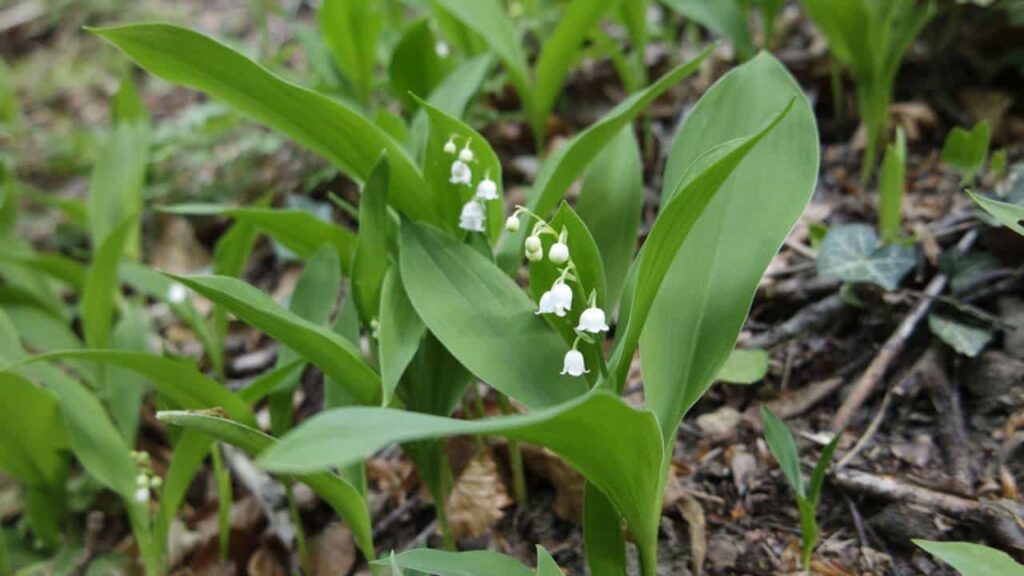
All this talk of flowers and feelings points to a broader idea: our homes are emotional ecosystems. They’re not just physical structures where we eat and sleep; they’re living, breathing reflections of our inner worlds. Psychologists have noted that the notion of “home” is largely psychological – shaped by our memories, identities, and emotions as much as by walls and furniture. We imbue our living spaces with our stories and values, and in turn, those spaces influence how we feel every day. Colors can affect our mood, lighting can energize or relax us, and the objects we choose to display can trigger inspiration or provide comfort. In a real sense, a home is where your emotional life takes shape in a tangible form. When you carefully arrange a reading nook or hang a painting that makes you happy, you’re curating not just a look but a feeling.
In this light, something like lily of the valley becomes more than a decorative choice – it becomes part of your home’s emotional language. Think of your home as an ecosystem where each element plays a role in your well-being. The sunlight that pours through your window in the morning, the cozy rug under your feet, the scent of your favorite candle, even the little plant on the shelf – all these interact to create the ambience that you live in and respond to. Research has shown that we can deliberately design our home environments to regulate our emotions. In fact, one study cited in Perspectives on Psychological Science argued that our physical spaces can be “particularly powerful mechanisms for regulating emotion” because we can organize and decorate them to evoke the ambiances we desire. In plain terms: what we put in our homes can actively help shape how we feel. Cherished mementos on the mantle may spark joy and gratitude when you see them. A chaos of clutter, on the other hand, might subtly raise your stress. We’ve all felt that difference – walking into a calm, beautiful room versus a messy, impersonal one.
So, when you introduce a meaningful symbol like lily of the valley into your space, you’re doing more than decorating; you’re tending to your emotional garden. This flower in your home might represent hope, or peace, or the promise of happiness renewed – and by seeing it daily, those feelings are reinforced in you. It’s similar to how seeing a family photo can make you feel loved, or a souvenir can remind you of an adventure and boost your spirits. Our surroundings continually send signals to our subconscious. By curating those surroundings with care, we essentially create a supportive environment for our emotional life.
The lily of the valley’s metaphor of quiet resilience and gentle hope is something we could all use more of in our daily routines. Life gets stormy; we all face days of stress, loss, or exhaustion. Having symbols around us that speak to our capacity to endure and bloom again can be incredibly uplifting. You might find that on a tough day, glancing at that little vase of lilies of the valley gives you a moment of pause and comfort – a reminder that “this too shall pass” and happiness will return, as it always does. In this way, our homes become ecosystems not just of things, but of emotions. A well-loved armchair might provide safety and rest. A stack of books might spark curiosity and growth. A cluster of lily of the valley might cultivate tranquility and optimism.
At its heart, this philosophy is about seeing your home as an extension of yourself. Fill it with what nourishes you emotionally, and it will in turn nurture you. As one writer beautifully noted, feeling at home is crucial to our well-being and comes from a mix of the physical, social, and emotional elements we cultivate. It’s the alchemy of space and soul. The quiet corner with the flower and the sunlight might encourage you to meditate or reflect, building your inner peace. The meaningful art on the walls might spark conversations that strengthen your connections with family or guests. In a very real sense, homes are emotional ecosystems that we can design and tend. By choosing symbolic, natural, and personal elements thoughtfully, we’re essentially gardening – planting seeds of feelings that grow and fill the atmosphere.
The lily of the valley is just one such seed. It reminds us that even the quietest, smallest elements of decor can carry profound meaning. In the ecosystem of your home, it might be a tiny plant, but its emotional fragrance can permeate the whole environment. And when your home reflects qualities like hope, renewal, purity, and happiness – guess what? You’re more likely to feel those things as you go about your life within those walls.
Conclusion: The Return of Happiness
In the quiet of morning, the faint scent of lily of the valley drifts through your home, wrapping the air in calm. By evening, its small white bells seem to glow in the fading light, a reminder that peace can be found in the simplest things. What we bring into our homes is never just décor; it’s emotion made visible.
The lily of the valley has long symbolized the return of happiness, a truth that still feels relevant in our fast, modern lives. Inviting such symbols into our spaces is more than an aesthetic choice; it’s an act of care and renewal. A thoughtfully adorned home becomes a living story, a quiet retreat for the soul.
Whether it’s a single bloom by your bedside or the gentle texture of natural wood under your hands, surround yourself with details that soothe and uplift. At Momiji, this belief blooms in every piece, from handwoven rattan furniture to calming, nature-inspired accents, each designed to help you build a sanctuary that feels alive with meaning.According to Psychology Today, our surroundings deeply influence our emotions and sense of well-being. When we fill our homes with intention and warmth, they become more than beautiful, they become healing. Like the lily of the valley blooming again each spring, your home, too, can renew your spirit and remind you that happiness always finds its way back.

